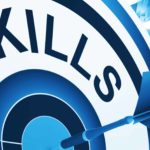IPP (Integrated Practice Protocol) is one of our most popular programs at SOI.
Why? Because it addresses a variety of learning difficulties including visual, auditory, and sensory-motor skills through a series of exercises customized to meet every student’s needs! Each student gets to work on building his/her skills.
The IPP program is a system for treating learning difficulties. It works to improve attention span, memory, comparison/contrast thinking, eye-hand coordination, systems reasoning and other skills essential to the learning process, helping students perform better in school and in life.
With IPP, the following areas are screened. An explanation for each is given.
SENSORY INTEGRATION
- Balance: Balance is a motor skill. At the beginning of life, motor activity develops before mental actions, then both work together and coexist, and, finally, mental action subordinates motor activity. The premise here is that proper development of motor skills is critical for learning – that motor experiences are the foundation of mental development. When motor skills are not fully developed, cognitive learning can be affected.
- Crossing the Midline/Mentally Crossing the Midline: When an individual is able to cross the midline (literally reach across or move across the middle of the body), it means that his/her brain has learned to plan and carry out a sequence of movements in proper order. When internalized, it leads to the ability to know your right from your left. We use ourselves as a reference point in understanding the orientation of an external object or a word. If a child had difficulty in understanding his/her own left and right, he/she will have difficulty with the proper orientation of a word or letter, and this may cause word or letter reversals.
- Body in Space: An individual should know where his/her body is in space with or without benefit of the visual system. Knowing this contributes to the knowledge and development of left/right, directions, spatial relations, visualization, etc.
FOCUSING SKILLS
- Teaming: This is the natural teamwork of the eyes, when both are being used at the same time to see the same thing. But under certain conditions, one is not teaming with the other because it is shut off or suppressed. This condition usually makes the visual system very inefficient.
- Aiming at the Target: This is a coordinated movement and alignment of both eyes inward when an object is held close, such as looking at a book; and a coordinated movement and alignment of both eyes outward when looking from a near object to a distant object, such as looking from a book to the whiteboard. Poor convergence skills can cause severe eye strain when a person reads. Seeing double and/or suppression of an eye is also possible. It may also cause the person to lose his place while he/she reads.
- Shifting Between Seat Work and Board Work: This is a focusing ability. Students with poor focusing skills will have print blur when they read or may have momentary blur when looking from the whiteboard to the paper. A deficiency in this area may cause eye strain and fatigue. It is usually corrected with vision training and/or reading glasses.
- Moving Across the Page: Ocular pursuits are eye movements used when following a moving object. Pursuits should be done subconsciously, smoothly, and without excessive head movement. If an object is moving and a person is moving, many different areas of the brain must coordinate efficiently in order to follow the object accurately. Poor pursuit functions are often associated with poor reading cognition and short attention span. Jerky eye movements when following an object, excessive head movements, overshooting the target, fatigue, and clumsiness are early symptoms, even when sight is 20/20.
- Targeting an Object: This is how well the eyes move quickly and accurately from one point to another. It is a critical function for good reading skills. Most eye movements in reading are this kind of movement. A deficiency in this area will cause excessive rereading, especially at the beginning of each line of print.
You can learn more about the program by watching this video:






